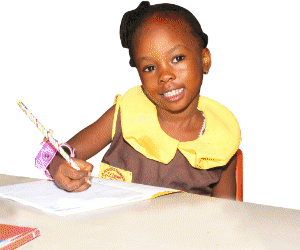By Politico Staff Writer
A report by the United Nations Children’s Fund (UNICEF) has revealed a dismal picture of access to learning by school children during the ongoing COVID -19 pandemic. The report, which comes just as countries are engaged in plans for schools to reopen, claims that some 463 million school children (at least a third of the world’s school population) are unable to access remote learning through online or internet at the height of the coronavirus.
The report quoted UNICEF Director Henrietta Fore as saying that the complete disruption months on end to the education of the children is a global education emergency, the repercussions of which could be felt in economies and societies for decades to come.
UNICEF presents a bleak picture on the status of children affected by the closure of schools around the world and claims that even in situations where children have the required technology and tools, they may not be able to participate actively in the remote learning, ‘’due to competing factors in the home, including pressure to do chores, being forced to work, a poor environment for learning and lack of support in using the online or broadcast curriculum.”
The report released last week was based on a global representative analysis on the availability of home-based technology and tools that it says are ‘’needed for remote learning among pre-primary, primary, lower- secondary and upper-secondary school children, with data from 100 countries ‘’. According to the report, the data collected include access to radio, television, internet and curriculum presented through these platforms during school closures.
The report was particularly critical of the conditions school children in sub Saharan Africa are encountering, with almost half of all students in this part of the world unable to reach out to remote learning.
Some 48 percent or some 54 million of school children in West and Central Africa cannot access remote learning, according to the report. Some 67 million or 49 percent in East and Southern Africa are also deprived of remote learning, it adds. East Asia and the Pacific have 80 million students who cannot have remote learning, but that represents just 20 percent of the school going population, the report goes. For the Middle East and North Africa, the figures show 37 million or 40 percent, whilst South Asia has the highest number of children not accessing remote learning - 147 million, that is 38 percent of the school population. For Eastern Europe and Central Asia, the number is 25 million, which is 34 percent of the school children, with Latin America and the Caribbean accounting for 13 million or 9 percent.
The report further noted that of these figures, 217 million primary school children cannot reach remote learning. Some 78 million and 48 million lower secondary school and upper secondary school respectively, lack the gadgets to access remote learning during this pandemic. And 120 million pre-primary school children are the most affected, according to the report.
UNICEF has meanwhile urged governments around the world to ‘’prioritize the safe re-opening of schools when they begin easing lockdown restrictions’’.
Copyright © 2020 Politico Online








